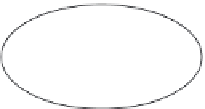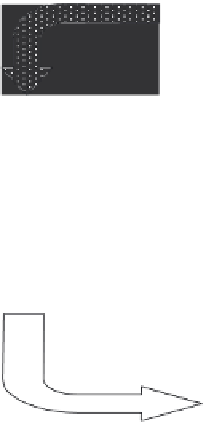Environmental Engineering Reference
In-Depth Information
Strategy for rehabilitation of marine environment
Minimize discharge,
proper waste disposal
Integrated
environmental studies
Countermeasures for eutrophication
and polluted sediments
Creation of natural
purification systems
Rehabilitation
FIGURE 8.23
A strategy for rehabilitation of the marine environment.
one hand, suficient removal of excess nutrients is needed to avoid eutrophication, and on
the other hand, suficient nutrients must be available for the aquatic animals that rely on
these nutrients for their food supply. A sustainable coastal marine environment requires
a natural puriication system. Research and development into how this can be achieved
would contribute substantially to the goals of a sustainable coastal marine environment.
In the inal analysis, since fouling of the marine coastal environment and the sea is in
large measure attributable to the land-based activities and industries, proper control and
management of the land contamination would go a long way towards mitigating fouling.
References
An, Y.-J., Kampbell, D.H., Weaver, J.W., Wilson, J.T., and Jeong, S.-W. (2004), Natural attenuation
of trichloroethene and its degradation products at a lake-shore site,
Environmental Pollution,
130:325-335.
Brix, H. and Lyngby, J. E. (1982), The distribution of cadmium, copper, lead, and zinc in eelgrass
(
Zostera marina
L.),
The Science of the Total Environment,
24:51-63.
Canadian Environmental Quality Guidelines (2003), Available at http://st-ts.ccme.ca/ (accessed
June 28, 2014).
Carral, E., Villares, R., Puente, X., and Carballeira, A. (1995), Inluence of watershed lithology on
heavy metal levels in estuarine sediments and organism in Galicia (north-west Spain),
Marine
Pollution Bulletin
, 30:604-608.
































Search WWH ::

Custom Search